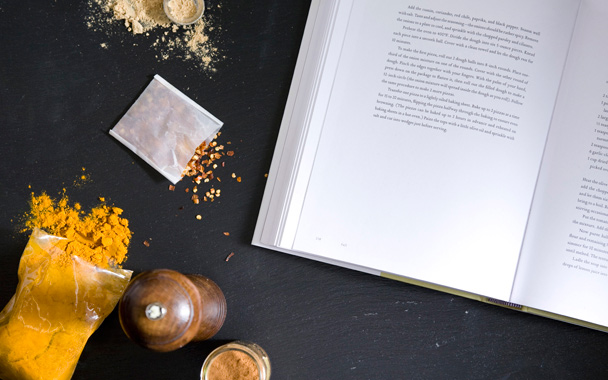We all deal with the middle-of-winter, nothing-in-the-market syndrome in different ways. Me, I’ve been on an Indian food jag, cooking up big messes of dals and curries. But my wife, Tara, has decided that this is the time to cook her way through all the cookbooks she bought last year. Last week she made a terrific Moroccan soup called harira from David Tanis’s A Platter of Figs and Other Recipes. It called for browning a pound of lamb shoulder with onions, garlic, spices (ginger, cinnamon, turmeric, black and red peppers), and saffron, then adding lentils, dried favas, and an enormous amount of water. Everything cooked together for a couple of hours, until the soup was silky smooth. Then Tara added a cup each of tomatoes, cilantro, and parsley she had sorted together in the food processor. Half an hour later she thickened the soup with a half-cup of flour and let it simmer some more.
The soup was delicious, hot with spice and sharp with herbs against the earthy background of lamb and pulses, with a fragrant suspicion of astringency from the saffron that kept my senses awake. There was also a ton of it for how little meat went in. I met David Tanis briefly, years ago, and he seemed like a calm, quiet, open-handed soul overflowing with enjoyment for life. (You can see this, I think, in the videos on the Gourmet site.) This recipe takes a few ingredients and coaxes the maximum amount of interest and pleasure from them, and in that way the soup reminds me of the man himself.
I have not met Simon Hopkinson, but having watch Tara make the chicken pie from his new book, Second Helpings of Roast Chicken, and having eaten the result, I feel as if I know him. It’s a recipe written as if the cook had nothing to do but potter around the kitchen all day. First you make a bed of vegetables (leek greens, onions, carrots, and celery) in the bottom of a deep pot with a little water, put an entire chicken in on top, and steam the whole mess into submission. You strain the resulting rich liquid (which reminded me of something magical-sounding that Francis Lam once described) and chill it while shredding the meat from the chicken. You save the fat from the chicken broth and bring the liquid to a boil. In go some sliced mushrooms and the sliced leek bottoms to cook until they’re soft. You strain them out and put the infused liquid back on to reduce by half. Next you make a roux with flour and the chicken fat, add milk to make a white sauce, add the reduced broth and simmer “until smooth and unctuous,” then add cream. Finally, you mix this concentrated elixir with the chicken meat, leeks, and mushrooms; encase this lovely mixture in a lard pastry crust; glaze it with egg; and bake it in the oven for an hour.
That whole process may have taken four hours, which Tara split over two days, but when that pie finally came out of the oven, the whole world stopped. It was soft and rich and crunchy and wonderful, and we ate it for a couple of days, the food of love and generosity. If recipes reflect the cook, I’m betting Simon Hopkinson is a man who loves his creaturely comforts and is willing to work for them.




 Pinterest
Pinterest


